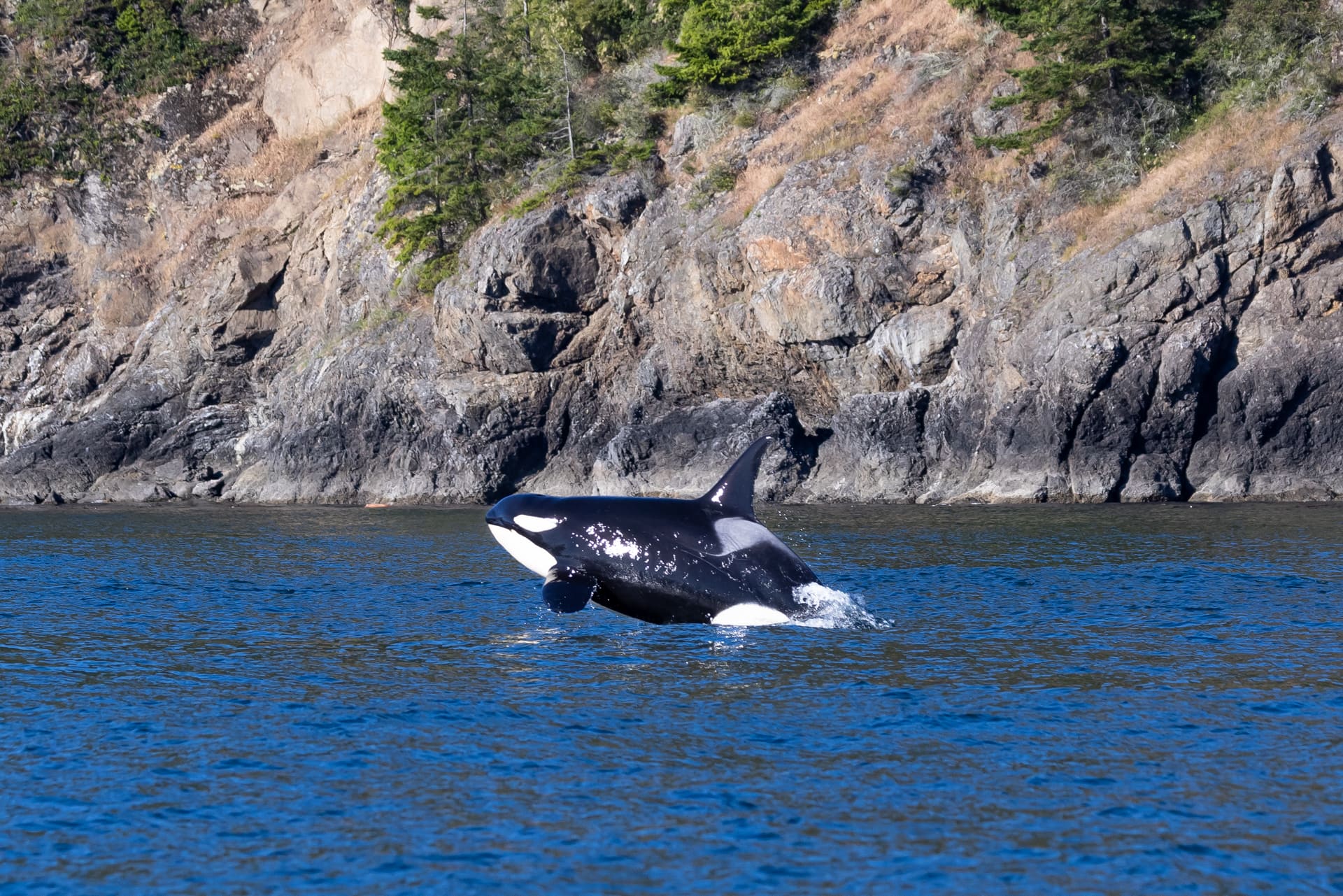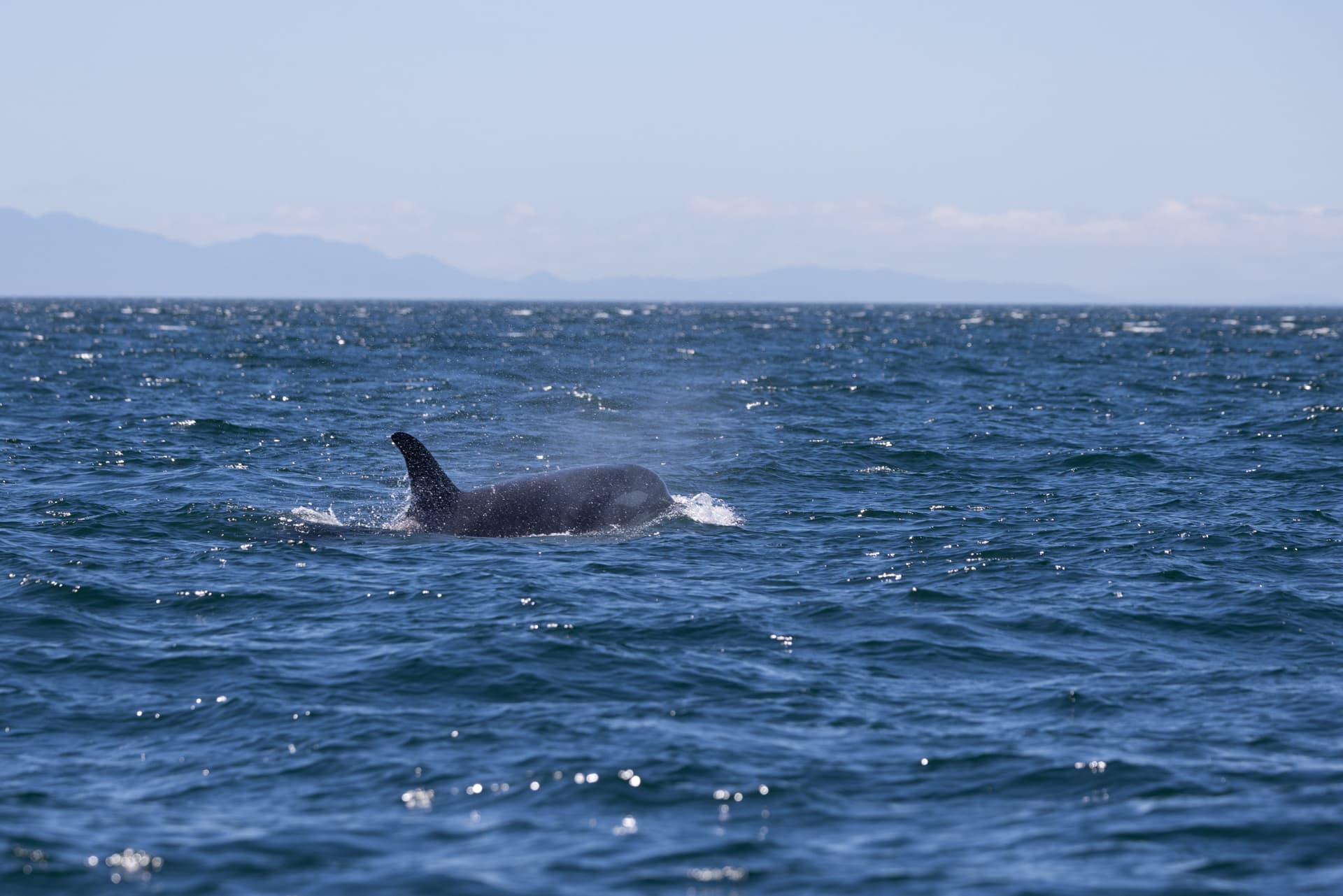
The inhumane capture of Pacific Northwest killer whales for the aquarium industry ended in the 1970s. At least 50 calves were snatched from their families in the preceding years, as others died or were killed in this brutal process. Most losses were sustained in the Southern Resident killer whale community, leaving just 71 whales. Scientists estimate that this population was once around 150.
In the 1980s, signs looked optimistic as the population increased, and at their peak, the Southern Residents numbered 98. Then began a sharp decline, and so here we are today at 73—almost a flat line from the end of the capture era.
Today we know far more about how genes drive susceptibility to disease, and analyzing the human genome is leading to exciting targeted gene therapies. Scientists can also use these tools to better understand the threats to endangered wildlife and find ways to aid them.
A new NOAA study examined the genome of 100 Southern Resident killer whales using previously collected biological samples. These confirm the isolation of this population. They do not mate with other killer whales with whom they share the Salish Sea, so they are genetically and culturally separate, making them vulnerable to inbreeding.
What is inbreeding?
This occurs when a population is small, and no new genes are added to the gene pool, i.e., by mating with another population. This means the likelihood is higher that animals with a common ancestor will breed than if they were in a larger, more genetically diverse population.
Therefore, the genes a Southern Resident killer whale calf inherits from both mom and dad may contain identical segments of genetic material from their shared relative. This is problematic, as health implications can arise when “dangerous” genes are paired. The study suggests this may lead to inbreeding depression, that is, lower overall survival rates, meaning whales may die prematurely, perhaps even before breeding age, resulting in population decline.
What does this mean for the future?
“The combined pressures of overfishing, habitat loss—including dams—pollution, and noise in their environment are the main factors limiting the Southern Resident killer whales’ population growth,” said Dr. Giles, Wild Orca’s Science & Research Director. “In the 1990s—when the effect of inbreeding depression was equally strong—these whales were able to thrive because, quite simply, there were more Chinook salmon. Today, 69% of all pregnancies fail due to declining populations of Chinook salmon across their range from B.C. to California.”
Yet mammal-eating killer whales living in the same noisy and polluted waters thrive because their food source is plentiful. Even though their prey is highly contaminated, these chemicals are stored in their blubber. Yet, Southern Resident killer whales must use their fat supplies when prey is scarce, releasing contaminants into their bloodstream. Females transfer these to calves while nursing or in the womb, leaving them more contaminated than their mothers.
“Frankly, this new genomic study just tells us that we need to sharpen our focus, double down our efforts and do everything we can to ensure the survival of wild Chinook salmon.” Giles continued, “If we can save Chinook salmon, we can save not just the Southern Resident killer whales but coastal fishing communities, securing important tribal cultural traditions and so honoring treaties. We can also ensure our Pacific salmon are more resilient in the face of climate change.”
“This new research is not a death sentence for Southern Resident killer whales,” she concluded. “This is a warning, a clarion call we must heed. We all rely on healthy ecosystems. To ignore the threats to the Southern Resident killer whales is to ignore the threats to humanity.”





